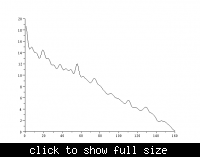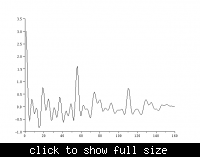navinmenon
Newbie level 3
I am new to speech processing and was trying to pitch extraction. For this I was trying compute the auto-correlation on a frame by frame basis.
When I used the speech samples as such, the auto-correlation function seems to have less of variations. On the other hand if I reduce the average sample value for the frame from each of the samples and then compute the auto-correlation, it has more variations and it becomes easier to pick the first maxima for pitch determination.
I would be nice if someone could comment on this.


When I used the speech samples as such, the auto-correlation function seems to have less of variations. On the other hand if I reduce the average sample value for the frame from each of the samples and then compute the auto-correlation, it has more variations and it becomes easier to pick the first maxima for pitch determination.
I would be nice if someone could comment on this.

